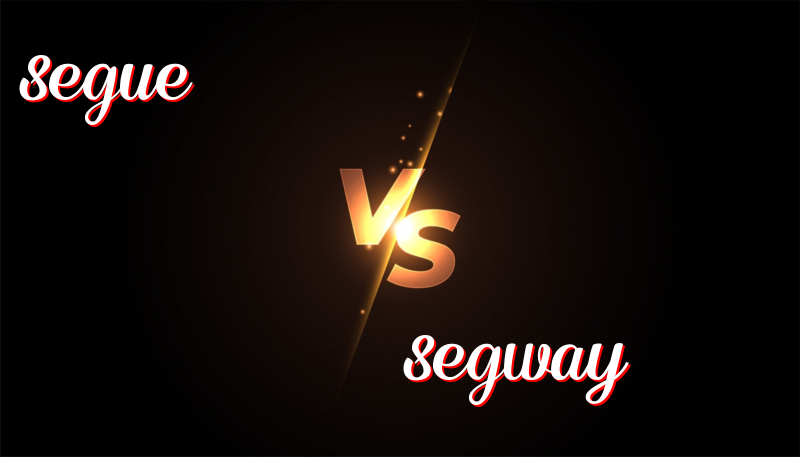Rolling Transitions: From Smooth Moves to Two-Wheeled Grooves
Understanding Segue vs. Segway
The words “segue” and “Segway” may sound the same, but they are quite different. Let’s explore their meanings, history, and how to use them.
The Word “Segue”
History: The word “segue” comes from Italian. It means to move smoothly from one thing to another.
How to Use: “Segue” is often used when talking about music, speech, or writing. It describes a smooth change from one part to the next.
Examples:
- In the play, the actor made a perfect segue from a sad scene to a happy one.
- The teacher’s segue from math to science kept the class interested.
- Music segues in the concert were so smooth, the audience hardly noticed the change.
- The book’s segue from chapter to chapter helped the story flow well.
- The speaker used a clever segue to connect two different topics in her talk.
The Word “Segway”
History: “Segway” is a brand name. It refers to a two-wheeled, self-balancing vehicle. It was first made in 2001.
How to Use: “Segway” is used to describe riding or using this specific type of vehicle.
Examples:
- We took a Segway tour around the city.
- He enjoys riding his Segway at the park.
- Learning to ride a Segway is easier than it looks.
- She received a Segway as a gift for her birthday.
- The Segway race at the event was exciting to watch.
Trick to Remember the Difference
To remember the difference:
- Think of “segue” as a smooth transition or change.
- Think of “Segway” as a type of vehicle, like a scooter.
Summary
“Segue” is a word used to describe a smooth change, often in speech or music. “Segway” is a name for a type of vehicle. Though they sound the same, their use is for different things. Remember this whenever you use these words!

Leave a Reply
You must be logged in to post a comment.